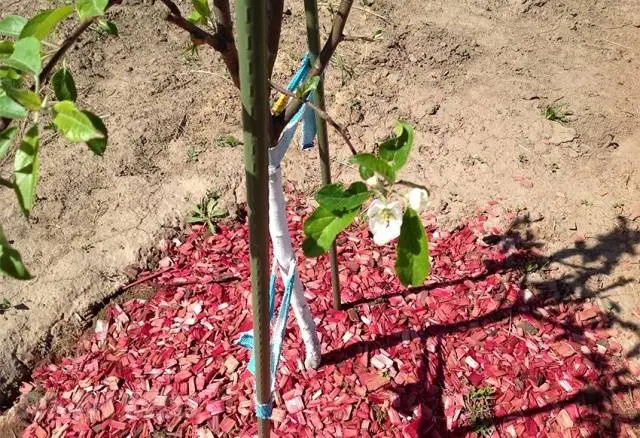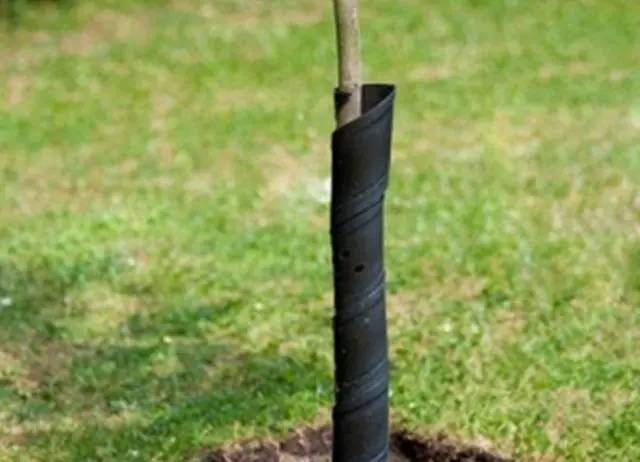Contents
Growing ordinary fruit trees is already boring for modern gardeners; today there is a fashion for dwarf varieties and species. Gardens, consisting of miniature columnar trees, are much more interesting and picturesque: low trees with short lateral shoots pointing straight up, densely strewn with large fruits. Columnar fruits not only look spectacular, they give good quality, plentiful harvests and have a lot of advantages. At first, there were only dwarf varieties of apple and pear trees, the selection of recent years allowed gardeners to see almost any kind of fruit: plums, cherries, apricots and others.
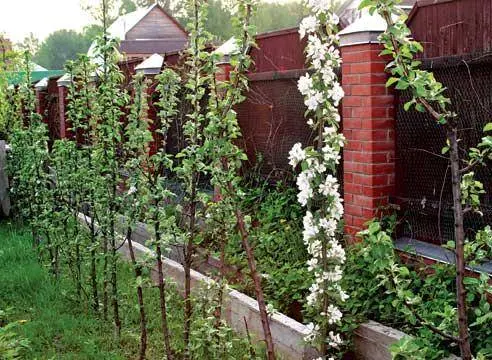
A detailed description and photo of columnar fruit trees are given in this article. Here we will talk about all the nuances of dwarf gardening, the pros and cons of such crops, and the rules for growing columnar plants.
Features of dwarf varieties
Outwardly, the columnar tree, of course, looks quite exotic: a very straight trunk, from which many short side shoots extend at an acute angle. By autumn, apple and pear trees are covered with fruits, and the tree, indeed, strongly resembles a column – an even trunk is densely strewn with large fruits.
If you come closer to the columnar apple tree, you can see that this is an ordinary fruit tree. Apples look like the usual fruits, and they taste just as juicy and sweet.

Gradually, columnar fruit trees began to spread throughout the world, gaining more and more popularity every year. Today, many gardeners prefer this particular type of tree, because they have a lot of advantages.
Advantages and disadvantages
The main explanation for the popularity of columnar varieties lies in their greater profitability: compared to traditional gardens, dwarf gardens not only benefit in terms of yield, they are much more convenient to care for.
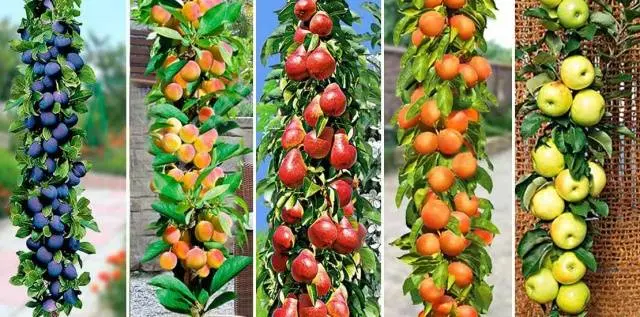
The advantages of columnar fruit trees are many:
- miniature size of the crown and root system, allowing you to grow different fruits in small areas;
- minimum intervals between neighboring trees, allowing to grow about 2000 columnar fruit trees per hectare of land against 400 traditional ones;
- the small height of the tree (up to 2,5 meters) greatly simplifies garden care and harvesting;
- columnar varieties do not need bulk pruning – the gardener will only have to maintain the shape of the crown;
- early fruiting – the gardener will receive the first full-fledged harvest already in the second year after planting the seedlings (ordinary varieties bear fruit at best in 4-5 years);
- saving chemicals for processing a columnar garden – for a compact crown, you will need very little money.
It turns out that with the same area of u1bu2bthe orchard, the yield of columnar trees will be higher. In addition, the agrarians’ costs for chemicals, pruning, and fruit picking will be significantly reduced. Another plus is that it will not take long to wait for the first harvest – only XNUMX-XNUMX years.

The short life span (12-15 years) of such trees is due to their rapid depletion, because with small dimensions, columnar varieties bear fruit on a par with ordinary and tall crops. After a specified period of time, most of the annuli on the tree die off, as a result of which the yield drops sharply. The gardener will have to uproot old plants and plant new columnar seedlings.
Varieties of dwarf crops
Columnar trees are used not only to obtain fresh fruits and vegetables, they are actively used in their work by landscape designers. Miniature trees with an elongated cylindrical or cone-shaped crown look very original, so they can decorate any exterior.
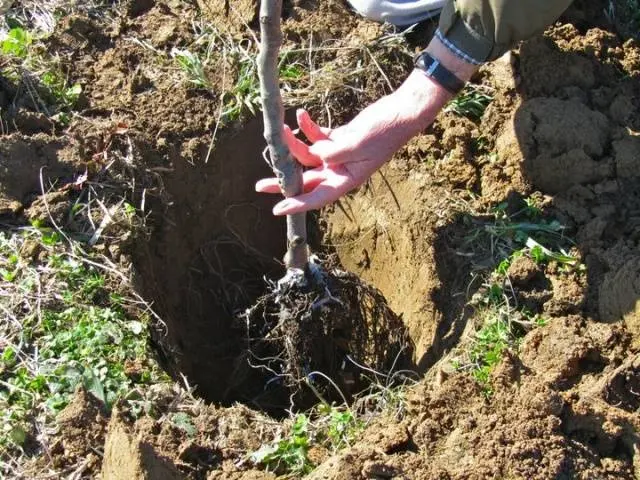
All columnar plants today are divided into three large groups:
- Fruity (or fruit).
- Deciduous.
- Conifer.
In turn, fruit columnar varieties are divided into two more types: seed dwarf trees and grafted dwarfs are distinguished. Seeds are distinguished by the presence of a special gene responsible for the restrained growth of the plant (dwarf gene). Such fruit trees can be grown from seeds in the usual way. Grafted dwarfs are propagated by maternal branches of columnar plants, which are grafted onto the root system of an ordinary related tree.
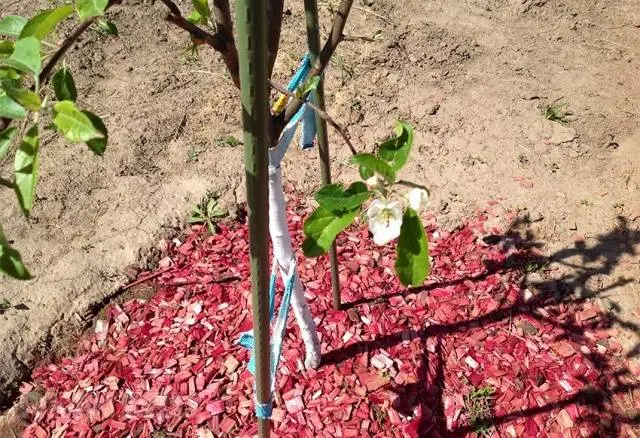
Growing rules
If you simply plant a seedling of a columnar variety and do not care for it, an ordinary fruit tree will grow, which will only have a limited growing point. In order for a real miniature garden to grow, it is necessary to provide it with competent care: planting, watering, pruning, top dressing.

The mini-now crew
For planting, it is recommended to choose seedlings of columnar crops, whose age does not exceed one year. Older trees take root worse, often get sick, and later begin to bear fruit.
Like regular varieties, dwarfs can be planted in a permanent place in spring or autumn. Exactly for columnar crops, autumn planting is recommended, so the trees will have more time to acclimatize and prepare for the upcoming flowering and fruiting.
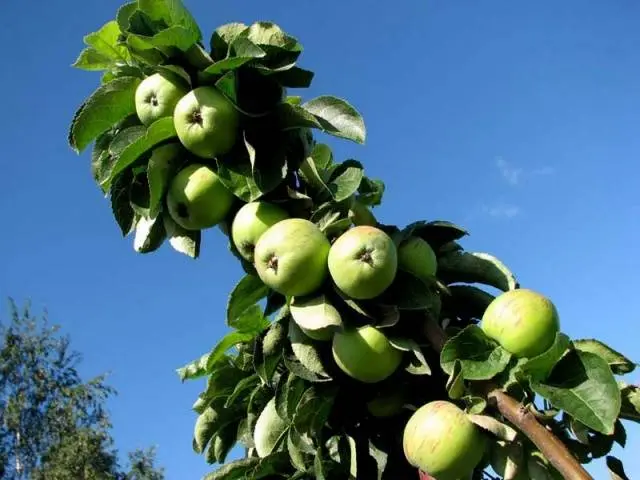
A place for landing dwarfs is chosen sunny, protected from northern winds and drafts. It is advisable to prepare planting pits six months before planting fruit trees. The depth of such a hole should correspond to the size of the root system of the seedling, usually 50 cm is enough. The diameter also corresponds to 50-60 cm. If there are a lot of seedlings, you can prepare trenches for planting them.

When planting dwarfs in the fall, organic fertilizers such as compost, humus, cow dung or bird droppings are introduced into the pit from spring. Just before planting, only mineral complexes can be used.
The planting of columnar trees itself is carried out in the same way as usual:
- A couple of buckets of water are poured into the pit prepared and filled with fertilizers.
- When the water is completely absorbed, a seedling is placed at the bottom of the pit. The root neck of the tree should be a few centimeters above the ground, and all the roots must be straightened.
- The earth, which the roots of the seedling were covered with, must be tamped down so that voids do not form in the soil.
- After that, the tree is again watered with a bucket of water.
- Since the roots of columnar fruit are located close to the surface of the earth, it is recommended to mulch the soil around the trunk or sow cereal crops in the near-stem circle (later the grass is mowed).
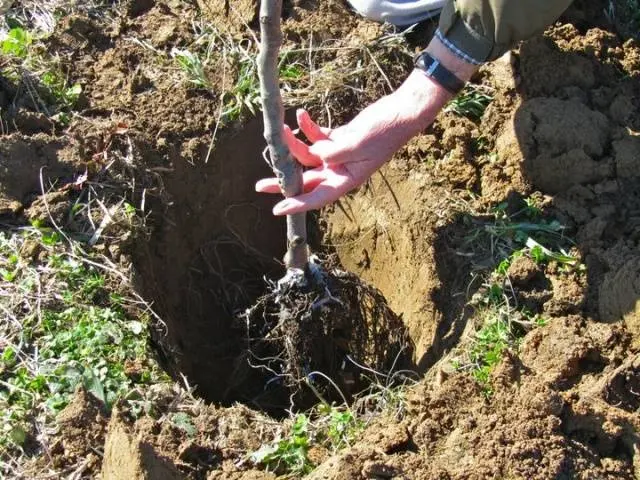
Since columnar fruit trees do not have spreading side shoots, they can be planted much closer to other trees than regular varieties. The optimal interval between dwarf trees is 50-60 cm. The minimum distance is 40 cm, with an interval of more than 120 cm, columnar varieties are not planted.
Proper maintenance of a miniature garden
In principle, it is necessary to care for a columnar garden in the same way as for ordinary fruit trees. However, there are some subtleties in this matter that a novice gardener should be aware of.
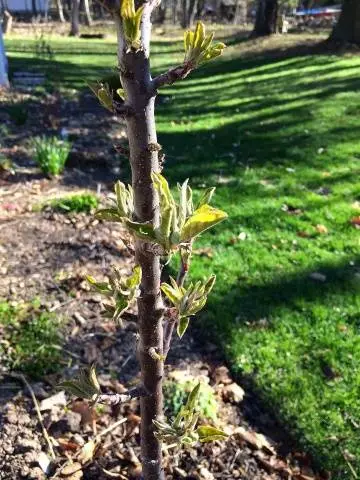
After planting, the dwarf garden will need the following:
- Removal of inflorescences in the year of planting. During the first calendar year after planting, the columnar tree is not allowed to bear fruit, therefore, all flowers that appear during this period are cut off. If this is not done, the roots of the plant will weaken, all the forces of the seedling will go to the formation of fruits, and not to the strengthening and growth of the tree.
- In the next 2-3 years, the number of flowers on dwarf trees will have to be normalized – a fragile trunk may not withstand the mass of a bountiful harvest. Inflorescences are cut with secateurs, out of 5-7 pieces in a bunch, leaving only 2 flowers.
- Since the roots of dwarf fruit trees are parallel to the ground and lie shallow, it is dangerous to weed weeds in the trunk circle – you can damage the root system of the tree. Therefore, it is recommended to mulch the ground with straw, sawdust, peat, husks. Or tin the soil with cereals.

- Young seedlings are recommended water regularly the first two or three months after planting. Then columnar varieties are watered as the soil dries. Excessive watering can lead to root rot, so you should not get carried away with them.
- In the first year after planting, additionally feed the trees no need. Subsequently, twice a year, it is recommended to apply organic and mineral fertilizers in the same way as for ordinary varieties.
- In order for the tree crown to resemble a column in shape, the gardener must pruning annually. In the first years after planting, the main emphasis is on shortening the side shoots and directing the growth of the tree upwards.

- Small trees can also get sick or be affected by pests. To prevent this, one should preventive spraying garden using chemical or biological preparations, folk remedies.
- Fragile young seedlings do not tolerate frost well, therefore, in the first years after planting, they are recommended. insulate with the onset of cold weather. To do this, you can use a thick layer of organic mulch, spruce branches, agrofiber and any other means of protection.

Conclusion
Here it was considered what kind of columnar fruit trees are, what is their peculiarity, how to properly plant and care for a dwarf garden. In principle, even a novice gardener can grow a miniature fruit paradise, because there is nothing complicated in this process. Each summer resident can experiment by planting several columnar crops on his plot: apple, pear, plum or cherry.










